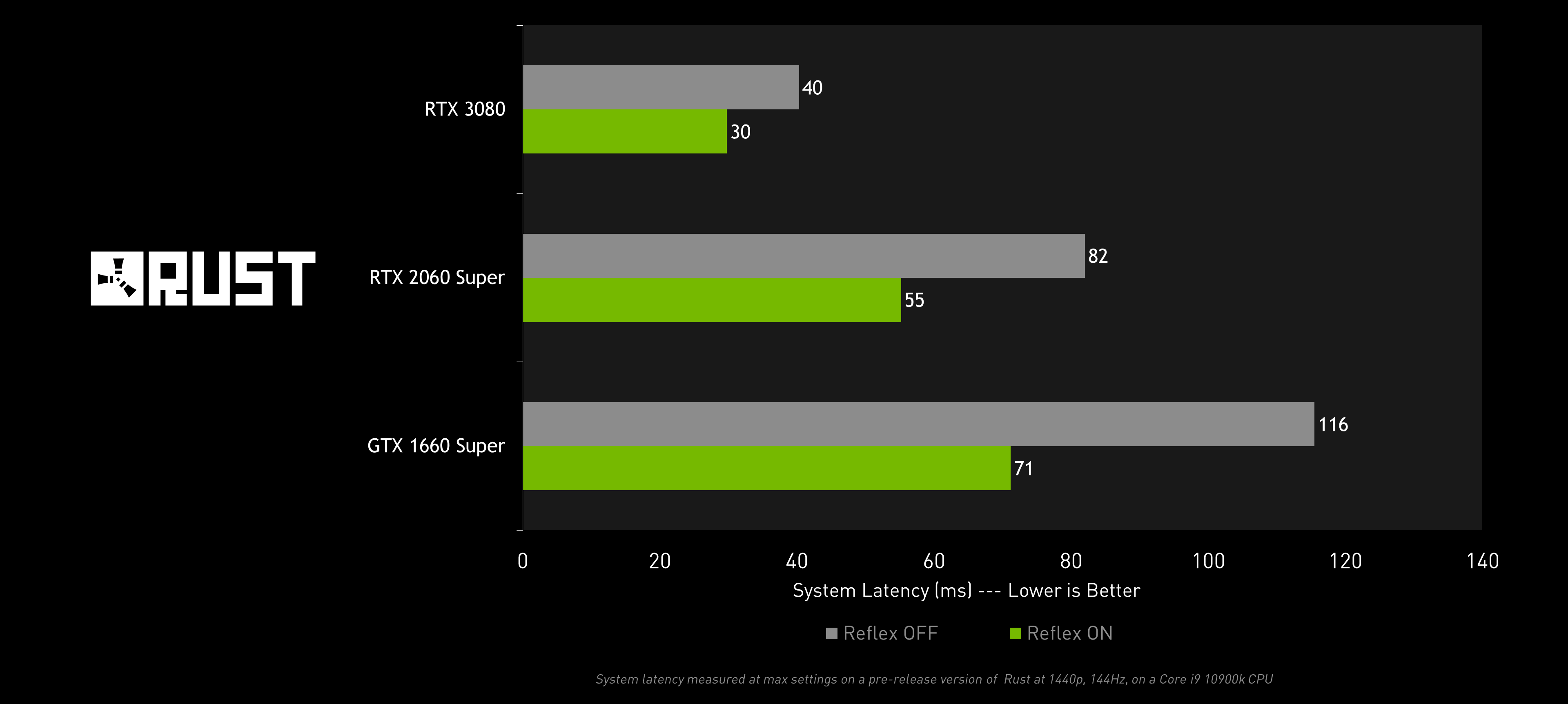Rust: NVIDIA Reflex Gives Players A Free Upgrade, Reducing System Latency By Up To 38%
In competitive games, higher FPS and refresh rates (Hz) reduce system latency, delivering more opportunities for your inputs to end up on screen. Even small reductions in latency have an impact on performance. Powerful GPUs, high refresh displays, and tuned game settings can help gamers unlock their full potential.
To further improve your performance on the virtual field there’s now also NVIDIA Reflex Low Latency Mode, a free update for many popular competitive games that reduces system latency. Acquire targets faster, react quicker, and increase aim precision simply by enabling NVIDIA Reflex in a game’s settings.
NVIDIA Reflex: Available Today In Rust
Facepunch Studios’ phenomenally successful Rust attracts ever more gamers to its high-stakes servers month after month, where everything and everyone is a threat to your survival. Sleep with one eye open, because a raid can occur at any time, and keep your head on a swivel when exploring, resource harvesting, and stalking enemy players.
With just a few hits being deadly, you want the fastest possible response times, your shots to land on the target, and your actions to occur that bit quicker than the enemy’s. Enter NVIDIA Reflex Low Latency Mode, which is available from 11am PT today in Rust for anyone with a GeForce GTX 900 Series or newer GPU.
"Nvidia Reflex is now available for Rust, reducing latency by up to 38%! Rust players with GeForce GPUs will get an upgrade by simply enabling Reflex through the options menu." - Helk, Rust's Project Lead, Designer & Programmer
To enable NVIDIA Reflex in Rust, download and install our latest Game Ready Driver and the newest game update, head to options menu in-game, then Graphics settings, and enable the NVIDIA Reflex setting. When activated, system latency will be reduced by up to 38%, greatly improving responsiveness:
Rust also includes the NVIDIA Reflex Latency Flash Indicator, so if you’re sporting a Reflex Latency Analyzer-compatible monitor and have GeForce Experience installed, enable the flash indicator in-game and position your monitoring rectangle over the indicator location to get accurate system latency results every time.
And if you wish to reduce system latency further still, there are a number of system tweaks, game tweaks and hardware upgrades that you can make, detailed in full in our System Latency Optimization Guide.
Stay Tuned For More Reflex and GeForce Updates
To be the first to learn about the latest NVIDIA Reflex games, bookmark GeForce.com and follow our social media accounts on your platform of choice. Also, be sure to check out our extensive NVIDIA Reflex and system latency primer.
